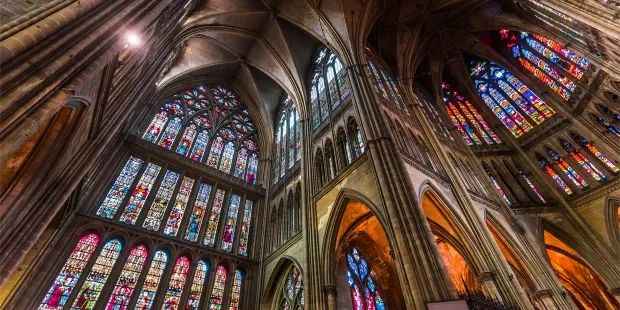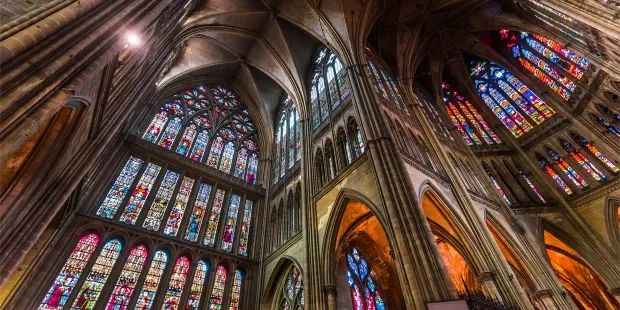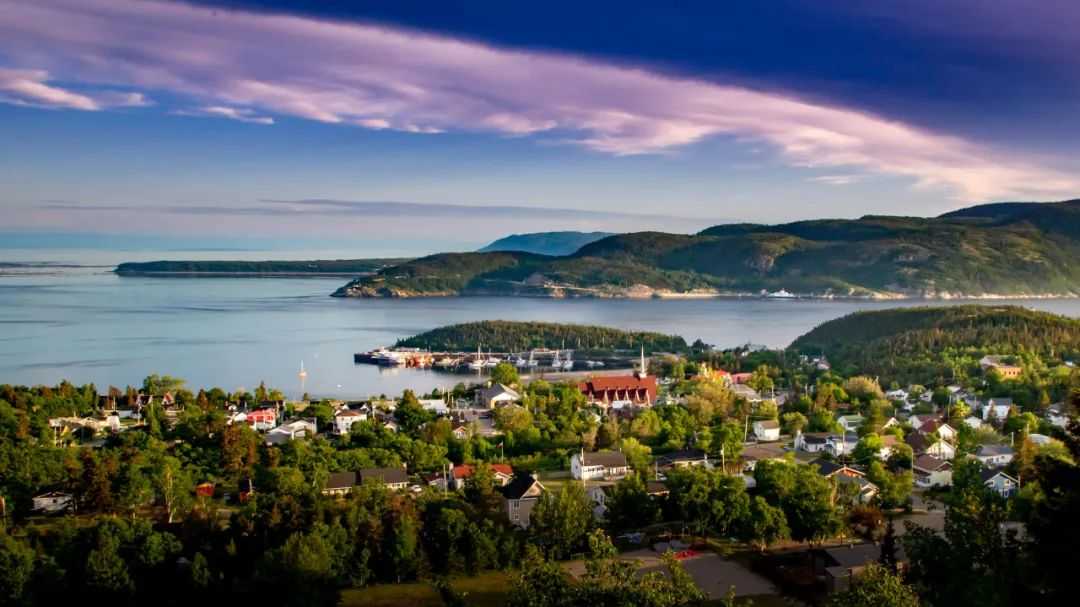Metz Cathedral: France’s Gothic Masterpiece and the World’s Largest Stained Glass Sanctuary

Source: Images from the Internet, if there is any infringement, please contact the removal of
Lead
Perched on the banks of the Moselle River in Lorraine, France, the Cathédrale Saint-Étienne de Metz stands as a testament to Gothic grandeur and artistic innovation. With 6,500 square meters of stained glass—the largest expanse in France—it has earned the nickname “Lanterne du Bon Dieu” (God’s Lantern), captivating visitors with its ethereal glow and architectural brilliance.
Body
Begun in 1220 and completed around 1520, Metz Cathedral’s ochre-yellow sandstone façade and flying buttresses exemplify High Gothic architecture. Its nave, rising 41.41 meters—the third tallest in France—channels light through its stained glass, creating a celestial atmosphere. A 1877 fire, sparked by fireworks during Kaiser Wilhelm I’s visit, devastated the structure, but a 1898–1903 restoration preserved its Gothic essence, adding the western portal’s saintly statuary. In 2015, the iconic Tour de la Mutte, home to the 11-ton “Mutte” bell, rang again for the first time since 1918 after a meticulous restoration, symbolizing resilience.
The cathedral’s stained glass, spanning from the 13th to the 20th century, is a chronological art exhibit. Early Gothic windows by Hermann von Münster depict biblical narratives in jewel-like hues, while 16th-century works by Théobald of Lixheim and Valentin Bousch blend Renaissance realism. The crowning glory is Marc Chagall’s trio of surrealist panels (1958–1968), which reimagine Genesis with dreamlike colors, harmonizing with medieval masterpieces. These windows survived WWII intact, shielded by sandbags during Nazi occupation.
Nestled in Metz’s Old Town, the cathedral anchors a cultural hub, flanked by the Musée de la Cour d’Or and the Romanesque Temple Neuf. Its square hosts the city’s renowned Christmas market, where wooden stalls contrast with Gothic spires. Underground parking and riverside promenades enhance accessibility, while evening illuminations transform the “God’s Lantern” into a golden beacon, merging architecture with nature.
Conclusion
Metz Cathedral transcends time, embodying humanity’s quest for beauty and faith. From medieval artisans to Chagall’s vision, its stained glass tells stories of resilience and creativity. As a UNESCO-listed site and France’s spiritual jewel, it remains a must-visit destination, inviting travelers to experience the interplay of light, stone, and history.









